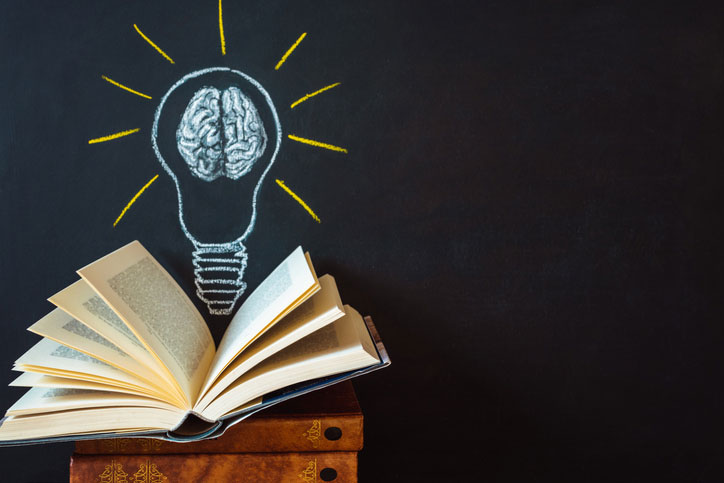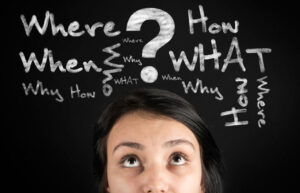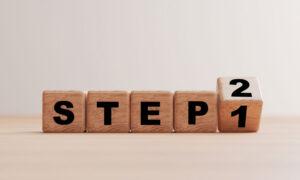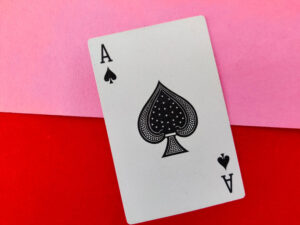Written by Haley Boyce

It happened. You’ve been assigned an academic paper with a prompt asking you to read a text and provide an analysis. Except you were today years old the first time you were asked to do that, and in a flash realize that task is just as difficult as it sounds. So you take to the World Wide Web. Your fingers tap out “define analysis” and send your query into the abyss with one press of the return key. You get this:
Analysis: noun
- detailed examination of the elements or structure of something.
- short for psychoanalysis
Mmmkay. What is it with formal definitions making the term sound even more confusing? It’s safe to say you’ve been given a piece of literature to read and must now provide some “analysis” – some detailed examination – of it, but you’re here because you need more of an explanation than what Webster is willing to hand over. Well guess what. I’m your new study buddy for this paper.
By the time you’re done here, you’ll be ready to pound out an analysis so deep and sensical the ghost of Aristotle will be summoned to hand over his title as the godfather of literary analysis.
Unpacking Literary Analysis
 It sounds simple enough to say that literary analysis is analyzing literature. But what exactly does that look and sound like? How do we go about analyzing? And how do we know when we’re doing it right?
It sounds simple enough to say that literary analysis is analyzing literature. But what exactly does that look and sound like? How do we go about analyzing? And how do we know when we’re doing it right?
When you read a text, especially one that you’re being asked to analyze for a class, it’s a good idea to read it at least twice. The first time, read it just to get familiar with the text. What’s going on, who are the characters, from what point of view is the story being told, where is the story taking place – all good questions to keep in the forefront of your mind during your first read. The second time around, start looking for answers to the prompt provided to you by your instructor. If you’ve been tasked with searching for a theme, let’s say, you’ll spend your time during the second read looking for the lesson the story can teach a reader about life.
Your goal in a literary analysis is to show that your reading of the text has resulted in an understanding of how it communicates a deeper meaning that matters to humankind.
Harsh Critics
 There is a bit of a difference between literary analysis and literary critique. The former being a deep dive into a work of literature’s connection to mankind. The latter being more of a book review sparkling with congratulatory glitter bombs or the gleaming edge of a machete headed straight for the book spine.
There is a bit of a difference between literary analysis and literary critique. The former being a deep dive into a work of literature’s connection to mankind. The latter being more of a book review sparkling with congratulatory glitter bombs or the gleaming edge of a machete headed straight for the book spine.
For fun, let’s take a look at some notorious literary critics who put the critic in critical.
- Harold Bloom: Professor at Yale and New York University, Bloom authored an impressive 40 books, many of which are literary criticism. Of Harry Potter and the Philosopher’s Stone, Bloom said, “Presumably, if you cannot be persuaded to read anything better, Rowling will have to do.”
- Michiko Katukani: If you like that special zing of adrenaline that comes from encounters that are at once entertaining and shockingly honest to the point of being cringeworthy, dive into her Pulitzer Prize winning work for the New York Times. Readers Digest referred to Katukani as the Queen of Mean for saying things like John Updike’s Witches of Eastwick is “magical mumbo jumbo” and Norman Mailer’s The Gospel According to the Sun, “a silly, self-important and at times inadvertently comical book.” Oof.
- James Wood: Wood once said that Nobel Prize winning author Kazuo Ishiguro’s Never Let Me Go had parts “that appeared to have been entered in a competition called The Ten Most Boring Fictional Scenes.” He’s backed off in recent years, now a far cry from his days at the Guardian and the New Yorker. He attributes this to being on the receiving end of harsh criticism for his own work.
The Three Steps of Literary Analysis
 There is so much to keep in mind when writing a literary analysis.
There is so much to keep in mind when writing a literary analysis.
Tone, style, syntax – all of that counts for something when writing, but when it comes down to brass tacks, a literary analysis relies on a trifecta of elements to thrive.
They are:
1. Identify the author’s purpose: This is the theme of the story. Sometimes known as the message or the lesson a reader can learn about how to live his or her own life while reading this story.
The goal is to find something in the story that sets your mind apart from other readers. Search for something that is deeper than the obvious.
Search for a talking point in the story that is inspired by the author’s use of literary devices like symbolism, for example.
Remember that every single thing in literature serves a purpose, and as long as you can explain the purpose you find with examples from the text, you’re good to go.
2. Analyze key elements: What parts of the story are critical to understanding the theme (remember this phrase is interchangeable with the “author’s purpose”, “message”, or “lesson”). Is it the setting or some part of the plot? Or how about the author’s voice, or even the point of view from which the story is told, or some combination of these things? These elements play together like a symphony orchestrated by the author to tell a story.
3. Connect your ideas: This is where you will provide the bulk of your analysis. Here, the goal is to do your very best to explain to your audience why and how the key elements prove the theme that you find in the story. To maintain focus, choose just one theme and spend your time incorporating multiple pieces of evidence from the text (quotes that exemplify the key elements) to explain how they teach your theme.
Your ACE in the Hole for Literary Analysis
 This is not an advertisement for formulaic writing. I repeat: This is not an advertisement for formulaic writing. BUT! When you’re struggling to write something during those times when your brain is fried and your energy is tapped out, it can be helpful to remember a simple order of operations for academic writing.
This is not an advertisement for formulaic writing. I repeat: This is not an advertisement for formulaic writing. BUT! When you’re struggling to write something during those times when your brain is fried and your energy is tapped out, it can be helpful to remember a simple order of operations for academic writing.
For times such as this, I like to use a handy dandy acronym called ACE.
A: Answer the question from the prompt. Use part of the question in your answer. This is your claim, what you believe is the best answer to the question.
C: Cite using evidence. Pull several direct quotes from the text – about one or two per paragraph of your academic essay – that match the claim you state.
E: Explain the connection between your evidence and your claim. Any number of things happen in the story to teach you a lesson. Your job is to explain that to your audience in a way that assumes they are intelligent people, but also explains enough to leave no room for confusion or doubt.




